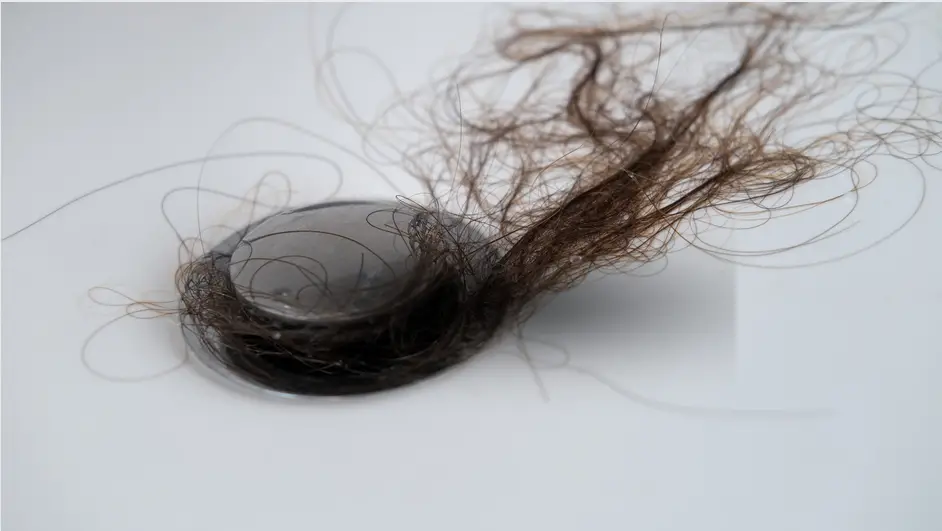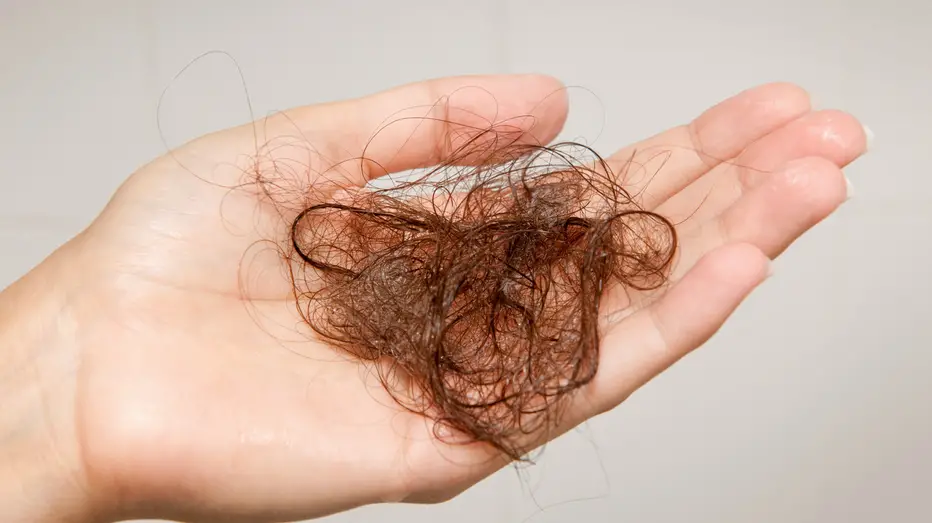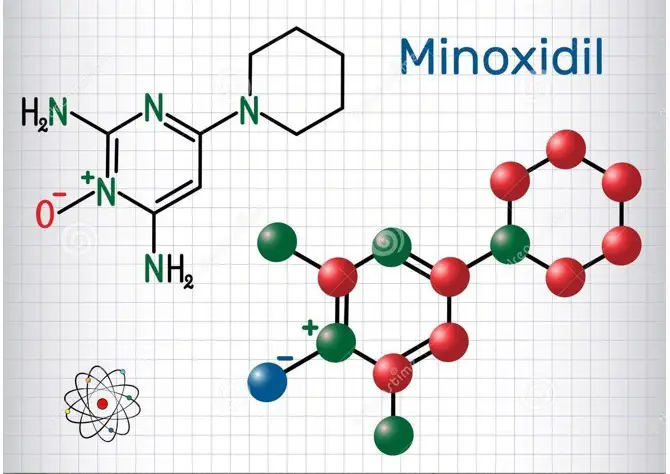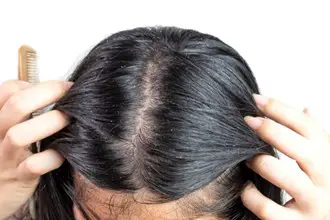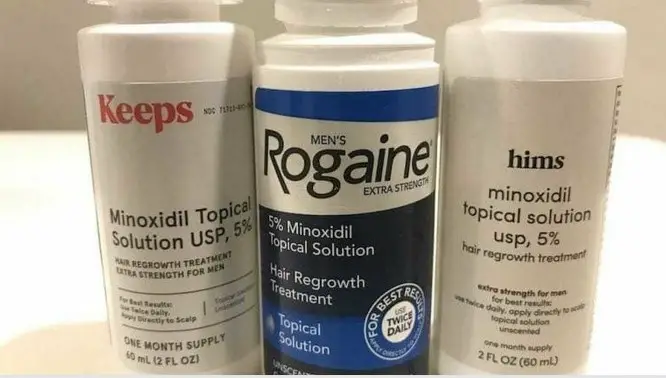Are you considering stopping your minoxidil treatment but worried about hair loss? You’re not alone. Minoxidil, a popular medication for treating hair loss, can have some undesirable side effects when discontinued abruptly.
Thankfully, there are ways to safely stop using this medication while minimizing any potential hair shedding. In this comprehensive blog post, we’ll discuss the ins and outs of minoxidil use, provide a step-by-step guide on how to taper off its usage gradually without losing hair and explore alternative treatments and methods for maintaining healthy locks after stopping minoxidil.
Understanding Minoxidil And Its Effects On Hair
Minoxidil promotes hair growth by increasing blood flow to the scalp and stimulating hair follicles, but it can also cause potential side effects such as scalp irritation, itching, and shedding of old hair.
How Minoxidil Promotes Hair Growth
Minoxidil promotes hair growth through a multifaceted process that focuses on increasing blood flow to the scalp, stimulating dormant hair follicles, and extending the anagen (growth) phase of the hair cycle.
As a vasodilator, minoxidil works by widening blood vessels in the scalp, allowing for improved nutrient and oxygen delivery to the hair follicles.
Additionally, minoxidil has shown promising results in prolonging the anagen phase of the hair growth cycle. This extended growth stage allows each strand more time to develop before transitioning into resting phases where shedding occurs.
By keeping more hairs rooted actively in their growing state for longer durations, minoxidil helps achieve not only denser coverage but also stronger strands less prone to breaking or falling out.
Potential Side Effects Of Minoxidil
While minoxidil has undoubtedly helped countless people combat hair loss and promote hair growth, it’s essential to be aware of its potential side effects. For the majority of users, topical minoxidil is relatively safe with only mild adverse reactions.
The most common one experienced at the application site includes dryness, itching, stinging, or scaling.
In rare cases, more severe side effects can result from systemic absorption of minoxidil through the scalp. Hypotension (low blood pressure), tachycardia (increased heart rate), and edema (swelling) are examples of such symptoms that might develop with prolonged use.
It’s crucial for anyone considering using this medication to understand these risks and consult their dermatologist before starting a treatment regimen.
What Happens When You Stop Using Minoxidil
Upon discontinuing minoxidil use, it is common to experience a reversal in the positive effects you’ve seen during treatment. The hair growth cycle that was stimulated by the topical solution tends to revert back to its original state, and the newly grown hair may begin falling out.
In fact, many individuals who stop using minoxidil go through a phase known as telogen effluvium – an increase in hair shedding caused by changes in the hair growth cycle.
This can be distressing for those seeking to maintain their new hair growth results but does not mean permanent damage has been done.
How To Stop Minoxidil Without Losing Hair: A Step-By-Step Guide
To stop using minoxidil without losing hair, a step-by-step guide includes gradually lowering the dosage, reducing the frequency of use, increasing time between applications, supplementing with hair growth vitamins, trying micro-needling or scalp massages, and using ketoconazole or DHT-blocking shampoo.
Step one: Gradually Lowering Dosage
One of the best ways to stop using minoxidil without losing hair is to gradually lower the dosage. Here are some steps to follow:
1. Consult with your dermatologist to determine a safe and effective tapering schedule.
2. Start by reducing the amount of solution applied to your scalp each day or every other day.
3. Maintain this reduced dosage for a few weeks before further reducing the frequency of use.
4. Slowly decrease the days per week that you apply minoxidil until you are only using it once a week or less frequently.
5. Supplement with hair growth vitamins, micro needling, scalp massages, or DHT-blocking shampoo during this transition period.
By following these gradual steps, you can avoid rapid shedding or significant hair loss when discontinuing minoxidil use.
Step two: Reducing Frequency Of Use
Reducing the frequency of minoxidil use is a gradual way to stop using it without losing hair. To do this, begin by applying the medication once every other day instead of daily.
Monitor any changes in hair growth and regrowth during this period to determine if you can decrease application further.
It is important to note that reducing frequency may not be suitable for everyone; consult with your dermatologist or healthcare provider before making any significant changes in your hair loss treatment plan.
Step three: Increasing Time Between Applications
To stop using minoxidil without losing hair, gradually increasing the time between applications can help. Here’s how to do it:
1. Start by applying minoxidil once a day instead of twice a day.
2. After a few weeks, increase the time between applications to every other day.
3. Continue this pattern, slowly increasing the time between applications until you are only applying minoxidil once or twice a week.
4. If you notice any hair loss during this process, slow down and stick with your current application frequency until it stabilizes.
5. Remember to use supportive hair growth products such as herbal and natural remedies, prescription medications, or laser hair growth devices in conjunction with reducing your minoxidil use.
It is crucial to follow this process carefully for best results and avoid any sudden changes that could cause significant hair loss due to stopping minoxidil abruptly. Gradually reducing usage can help maintain healthy hair follicles and prevent shedding.
Step four: Supplementing With Hair Growth Vitamins
In addition to tapering off minoxidil use, supplementing with hair growth vitamins can help maintain healthy hair after stopping the medication. Vitamins such as biotin, vitamin D, and iron have been known to support hair growth and prevent shedding.
Biotin helps strengthen hair strands while vitamin D increases blood flow to the scalp. Iron deficiency can lead to thinning hair or even hair loss, so it’s important to ensure adequate intake of this mineral through diet or supplements.
It’s essential to consult a healthcare professional before taking any new supplements or making significant changes in your medications. They may be able to recommend specific products that are safe for you based on your current health status and needs.
Step five: Trying Microneedling Or Scalp Massages
Incorporating micro-needling and scalp massages into your hair care routine can be beneficial when stopping minoxidil use to avoid losing hair. Here are some ways to try them:
1. Microneedling: This involves using a derma roller or a handheld device with tiny needles that puncture the skin on your scalp. The process stimulates blood flow to the hair follicles, promoting healthy hair growth.
2. Scalp Massages: Gently massaging the scalp with your fingertips increases blood flow to the hair follicles, which in turn promotes healthy hair growth. You can use essential oils like lavender or peppermint oil for a relaxing and rejuvenating massage.
3. Combination of Microneedling and Scalp Massages: You can combine microneedling with scalp massages for optimal results since both methods stimulate blood circulation and promote new hair growth.
4. Consult A Dermatologist: It’s always best to consult with a dermatologist before starting any new treatments or procedures, especially if you have existing medical conditions or allergies.
By incorporating these techniques into your daily routine, you can help maintain healthy hair growth even after stopping minoxidil use without experiencing major hair loss.
Step six: Using Ketoconazole Or DHT Blocking Shampoo
Another option to consider when stopping the use of minoxidil is incorporating ketoconazole or DHT-blocking shampoo into your hair care routine. These shampoos can help disrupt the effects of DHT, which is a hormone believed to contribute to hair loss.
A study showed that using a 2% ketoconazole shampoo was almost as effective for hair growth as 2% minoxidil. Both types of shampoos can also improve scalp health and reduce inflammation, which can further promote healthy hair growth.
You Would Like to Read:
- Minoxidil After Dermarolling
- Minoxidil Foam vs Liquid
- Does Minoxidil Expire
- Minoxidil Shedding Pictures
- Does Rogaine Cause Weight Gain
- Can I Use Minoxidil or Rogaine Once a Day
- Minoxidil Tretinoin
- Minoxidil Stops Working
Alternatives To Minoxidil For Hair Loss
If you’re looking for alternatives to minoxidil for hair loss, check out our fourth section where we discuss various herbal and natural remedies, prescription medications, laser hair growth devices, and even hair transplant surgery.
Herbal And Natural Remedies
If you are looking for natural alternatives to minoxidil, there are several options available. One popular herbal remedy for hair loss is saw palmetto, which is believed to block the production of DHT, a hormone that contributes to male pattern baldness.
Another option is green tea, which contains antioxidants and polyphenols that help stimulate hair growth.
It’s important to note that natural remedies may not work for everyone and should be used with caution. Always consult with a dermatologist or healthcare provider before trying any new treatments for hair loss.
Prescription Medications
Prescription medications can be effective in treating hair loss. Here are some options:
1. Topical minoxidil: Applied directly to the scalp, this medication promotes hair growth and can prevent further hair loss.
2. Oral finasteride: This prescription drug is taken orally and works by blocking the conversion of testosterone to dihydrotestosterone (DHT), a hormone that causes hair follicles to shrink.
3. Corticosteroids: These medications, which can be applied topically or injected into the scalp, reduce inflammation and can help with conditions like alopecia areata.
It’s important to note that all prescription medications come with potential side effects and should only be used under medical supervision. Additionally, results may vary and it may take several months of use before any noticeable improvements in hair growth are seen.
Laser Hair Growth Devices
Low-Level Laser Therapy (LLLT) has emerged as a promising treatment for hair loss. Laser devices emit red or near-infrared light to stimulate the hair follicles and increase blood flow to the scalp.
Studies have shown that LLLT can promote hair growth in people with androgenetic alopecia, otherwise known as male pattern baldness. Laser therapy is noninvasive and has minimal side effects compared to drugs like minoxidil or finasteride.
One study found that after 19 weeks of laser treatment, participants experienced up to 39% more hair growth.
Hair Transplant Surgery
Hair transplant surgery is a popular option for those who have experienced hair loss and are looking for a permanent solution. However, it’s important to note that hair transplant surgery is not a cure for male pattern baldness and will only cover bald scalp without protecting against further hair loss. Here are some key points to consider before undergoing hair transplant surgery:
1. Hair crown transplant surgery involves taking healthy hair follicles from areas of the scalp where there is still hair growth and transplanting them into areas where there is balding or thinning.
2. The success of the procedure depends on several factors, including the surgeon’s experience and technique, the patient’s hair quality and density, and the amount of available donor hair.
3. The recovery period can vary but typically takes a few weeks for the transplanted hairs to heal and start growing.
4. Hair transplant surgery can be expensive, costing thousands of dollars depending on the extent of the procedure.
5. While hair transplant surgery may provide a permanent solution for some individuals, it’s important to discuss all options with a specialist before making any decisions regarding treatment for hair loss. Other options include medications like minoxidil or prescription drugs, laser therapy devices, or natural remedies like herbal supplements or essential oils.
Remember that every individual has unique needs when it comes to addressing their hair loss concerns. A thorough consultation with a specialist can help determine which treatment plan is best suited for you based on your particular situation and desired outcome.
Tips For Maintaining Hair Health After Stopping Minoxidil Use
Incorporating gentle scalp massages and hair masks, using sulfate-free shampoo and conditioner, and avoiding heat styling tools and harsh chemicals can help maintain hair health after stopping minoxidil use.
Using Gentle Shampoo And Conditioner
One of the best ways to maintain hair health after stopping minoxidil use is by using gentle shampoo and conditioner. Here are some tips to follow for using these products effectively:
1. Choose a sulfate-free shampoo, as sulfates can strip your scalp of natural oils, leading to dryness and irritation. Look for shampoos that contain natural ingredients like aloe vera, tea tree oil, or lavender.
2. Condition your hair regularly with a product that is specifically designed for your hair type. If you have thinning hair, look for conditioners that contain biotin, keratin, or collagen to help strengthen and add volume.
3. Avoid using hot water when washing your hair, as this can damage the follicles and cause further shedding. Instead, use lukewarm water and rinse thoroughly.
4. Don’t over-wash your hair – aim to wash it every other day or every two days, depending on how oily your scalp gets.
5. Consider using a leave-in conditioner or detangler to help smooth out tangles and prevent breakage when combing or brushing your hair.
Remember that maintaining good scalp health is crucial for preventing further hair loss and promoting regrowth after stopping minoxidil use.
By following these simple tips for using gentle shampoo and conditioner, you can keep your hair looking healthy and full while transitioning away from minoxidil treatment.
Avoiding Heat Styling And Harsh Chemicals
Another tip for maintaining hair health after stopping minoxidil use is to avoid heat styling and harsh chemicals. Excessive heat from styling tools like hair dryers, straighteners, and curling irons can cause damage to your hair and make it more prone to breakage.
Instead, opt for gentle shampoo and conditioner that offer nourishing ingredients without stripping away essential oils from your scalp. Consider air-drying your hair as much as possible or using a cool setting on your blow dryer.
And if you do choose to style with hot tools, use a heat protectant spray beforehand to minimize any potential damage.
Incorporating Scalp Massages And Hair Masks
Incorporating scalp massages and hair masks can be a great way to maintain hair health after stopping minoxidil use. Here are some tips:
1. Scalp Massages: Gently massaging your scalp with your fingertips can help improve blood flow and stimulate hair growth. To do this, apply gentle pressure in circular motions using the pads of your fingers.
2. Hair Masks: Hair masks can provide nourishment to the hair and scalp, promoting healthy hair growth. You can make a DIY hair mask using ingredients such as coconut oil, honey, or avocado.
3. Frequency: Incorporate these treatments into your weekly routine to see the best results. Aim for at least one scalp massage session and one hair mask treatment per week.
4. Avoid Harsh Chemicals: When choosing commercially available hair masks or conditioners, make sure they don’t contain harsh chemicals that could damage your hair.
By following these tips, you’ll be able to maintain healthy hair even after stopping minoxidil use. Remember that consistency is key – the results may take time but they will be worth it in the end!
FAQs: How to stop using minoxidil without losing hair
What happens when you stop using Minoxidil? Can you stop hair loss after stopping Minoxidil? How does Minoxidil really work, and can it cause side effects? These are some of the most frequently asked questions about discontinuing the use of Minoxidil for hair growth.
What Happens When You Stop Using Minoxidil?
Stopping the use of minoxidil can cause hair loss to resume because the medication only affects hair when it’s actively being used. Any new hair that has grown while using minoxidil will be lost, and hair fall will resume at its pre-treatment rate if the medication is abruptly stopped.
However, one or two days of not using minoxidil products won’t affect long-term hair regrowth as long as regular use is resumed afterward. It’s essential to taper off the use of minoxidil gradually to minimize this risk, following a dermatologist’s guidance or a step-by-step guide available online.
When And How Should You Stop Using Minoxidil?
To stop using minoxidil without losing hair, it’s best to gradually taper off use rather than abruptly discontinuing it. A step-by-step approach to reducing dosage and frequency of use can help maintain the progress made with hair regrowth while minimizing the risk of shedding.
It’s recommended to first consult with a dermatologist or healthcare professional for personalized guidance on how to safely discontinue minoxidil use. Additionally, incorporating other hair loss treatments such as herbal remedies or laser devices can help support continued hair growth after stopping minoxidil.
How Does Minoxidil Really Work?
Minoxidil primarily works by increasing blood flow to the scalp, which in turn stimulates hair growth. This medication dilates blood vessels and allows more oxygen, blood, and nutrients to reach the hair follicles.
By increasing blood flow to the hair follicles, minoxidil can help prolong the anagen phase of the hair growth cycle and prevent shedding. Additionally, some studies suggest that minoxidil may also activate certain growth factors that promote hair regrowth.
It is important to note that while minoxidil can be effective in promoting hair growth, continued use is necessary for long-term results.
Can You Stop Hair Loss After Stopping Minoxidil?
Unfortunately, it is likely that hair loss will resume at its pre-treatment rate after stopping minoxidil use. Most people only lose the hair they regained from the medication upon discontinuing use, and the pattern of hair loss will revert back to its pre-treatment state and continue to progress as usual.
It’s important to note that while minoxidil can be effective in promoting hair growth, it is not a permanent solution for hair loss. To prevent further shedding or thinning of your hair after stopping minoxidil use, you may want to consider alternative treatments such as herbal remedies, prescription medications, laser devices or even surgery.
Can I stop using Minoxidil without experiencing hair loss?
It’s possible that stopping minoxidil could cause some shedding, but it typically only lasts for a short time period and should eventually resolve as your hair regains its natural growth cycle.
What is the recommended way to stop using Minoxidil?
Minoxidil users are usually advised to gradually reduce their use of the medication over time instead of stopping altogether. This can help ease any negative side effects you may experience during the transition while minimizing hair loss risk.
What are some alternative treatments for hair loss besides Minoxidil?
Other options for treating hair loss include finasteride – which helps block dihydrotestosterone (DHT), a hormone that contributes to male pattern baldness -, laser therapy, and topical scalp treatments with essential oils such as rosemary or peppermint oil.
How long does it take for new hairs to start growing after discontinuing Minoxidil?
Hair growth rates vary between individuals so it’s hard to say exactly how long it will take before seeing new hairs grow once you have stopped using minoxidil. You can expect an average timeframe of three months before seeing any significant regrowth however this timeline also depends on individual factors like genetics and age amongst other things so results may differ depending on various circumstances impacting each person differently..
Using Finasteride And Minoxidil Together
Finasteride and minoxidil can be used together to treat male pattern baldness. These two medications work through different mechanisms to help prevent hair loss and promote new hair growth, making them a potent combination.
Finasteride works by reducing the production of dihydrotestosterone (DHT), which is responsible for shrinkage of hair follicles in men with genetic predisposition to balding.
Minoxidil, on the other hand, enhances blood flow to the scalp and increases the size of hair follicles in their growth phase (anagen).
In fact, topical minoxidil fortified with finasteride has been found to be particularly effective at improving hair growth and thickness compared to standard minoxidil solutions.
Background On Male Pattern Baldness
Male pattern baldness, also known as androgenetic alopecia, is the most common type of hair loss in men. It is a hereditary condition that affects up to 70% of men over the age of 50.
The condition typically manifests as a receding hairline and thinning at the crown of the head.
While there are several treatment options available for male pattern baldness, minoxidil has become one of the more popular choices due to its effectiveness in promoting hair growth.
Minoxidil works by increasing blood flow to the scalp and stimulating hair follicles in their growth phase. However, it’s important to note that while minoxidil can help slow or stop further hair loss and even promote new growth, it cannot permanently reverse male pattern baldness.
Although stopping minoxidil doesn’t cause permanent damage or harm your health per se but some men who experience shedding as part of their normal daily routine may lose more hairs than usual when they discontinue use abruptly after long-term use without tapering off slowly over time.
Conclusion And Final Thoughts On Stopping Minoxidil Use
In conclusion, stopping minoxidil use can be a challenging task due to the potential risk of losing hair. It is crucial to follow the recommended steps and gradually taper off the medication to minimize any adverse effects on your hair health.
Combining other treatments like micro needling or scalp massages with proper scalp care can help retain hair growth even after discontinuation of minoxidil. However, it’s important to note that results may vary for everyone, and consulting with a dermatologist before starting or quitting any treatment is essential.
Source URLs
- https://www.aafp.org/pubs/afp/issues/1999/0415/p2189.html
- https://www.pennmedicine.org/for-patients-and-visitors/patient-information/conditions-treated-a-to-z/male-pattern-baldness
- https://www.ncbi.nlm.nih.gov/pmc/articles/PMC9298335/
- https://www.betterhealth.vic.gov.au/health/conditionsandtreatments/patterned-hair-loss
- https://www.everydayhealth.com/hair-loss/what-you-need-to-know-about-oral-minoxidil-for-hair-loss/
- AI Powered Bald Filter Online 2024: See Yourself with No Hair! - January 19, 2024
- Harklinikken Bad Reviews 2024: Analyzing Negative Feedbacks - January 18, 2024
- How to Get the Alex Eubank Hair | Step-By-Step Tutorial 2024 - January 18, 2024
